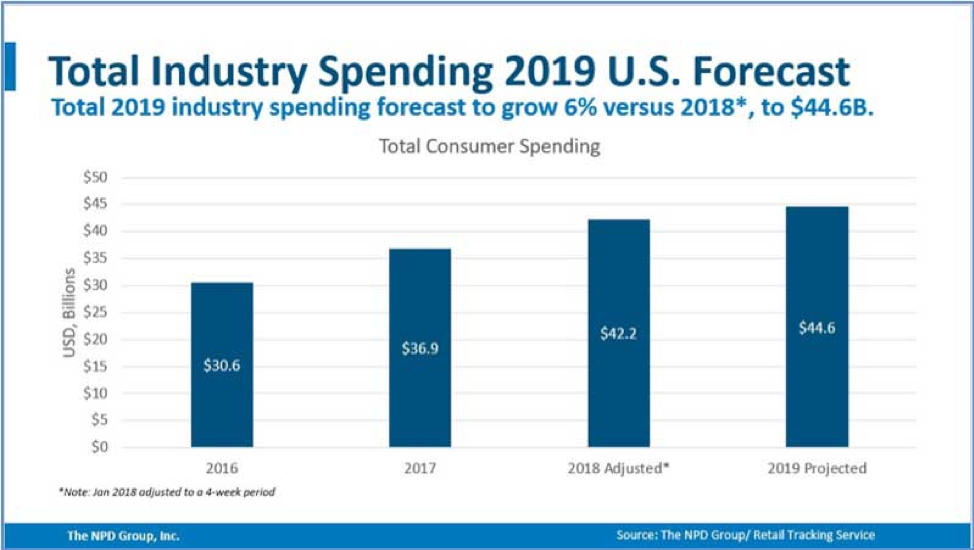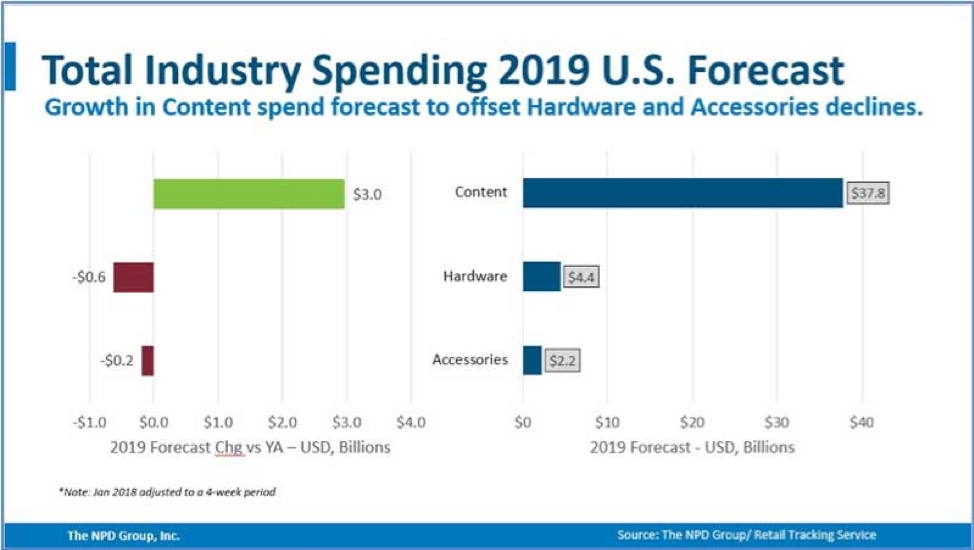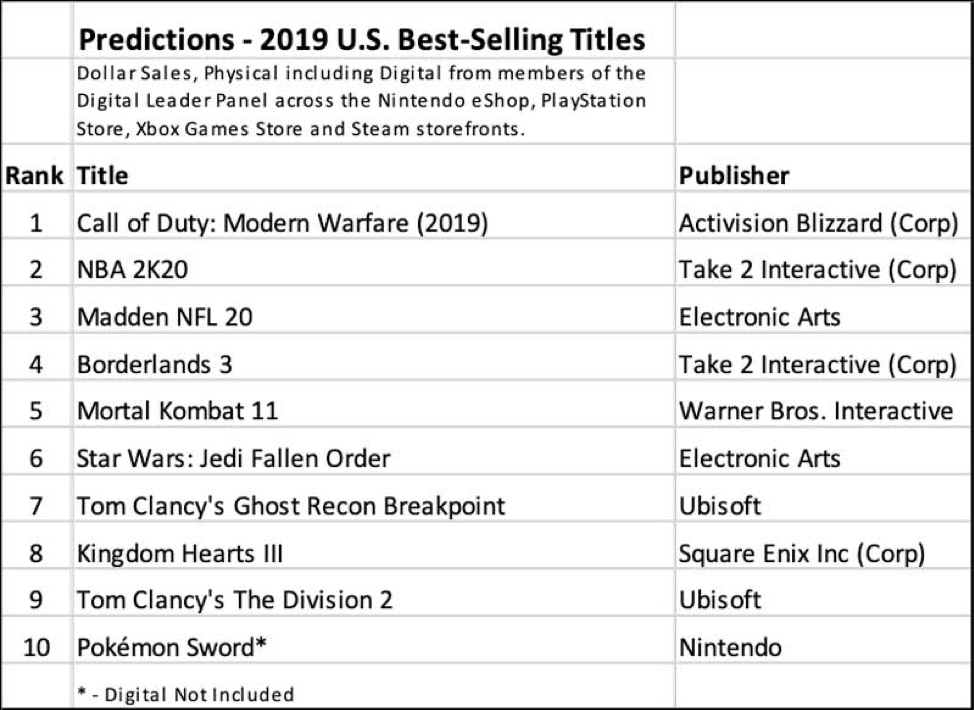Editor’s note: Mat Piscatella is industry analyst, U.S. Games, at market research firm The NPD Group, San Diego. This is an edited version of a post that appeared under the title, “2019 year-end expectations for the U.S. video game market.”
The last three years have been a period of remarkable performance for the U.S. video game market. A mobile segment that has been experiencing steady growth, a dramatic increase in digital spending on consoles and sales gains across hardware and accessories drove double-digit annual spending growth between 2016 and 2018.
While 2019 is not forecast to reach the double-digit percentage gains we’ve seen in recent years, continued strength in mobile, growth in digital spending on consoles and a thriving Nintendo Switch platform are projected to be the primary factors that will lead to $44.6 billion in annual consumer spend for the total video game industry in the U.S., an increase of 6%.
Below are the highlights of what I expect for the U.S. video game market in 2019.
Industry growth slows
The forecasted 6% growth for total U.S. video game industry spending across content, hardware and accessories is considerably smaller than the 14% growth achieved in 2018 and 20% growth in 2017.

Content is driving growth
Sales of video game content, which includes full game sales, downloadable content and microtransactions, as well as subscriptions across mobile, console, portable and PC, is forecasted to grow by 9% when compared to a year ago, to $37.8 billion. Mobile and console digital growth is expected to offset declines across other content segments such as physical and PC digital.
Sales of console and portable hardware are predicted to reach $4.4 billion, a decline of 12% when compared to 2018. Growth in sales of Nintendo Switch hardware is expected to be offset by declines across PlayStation 4 and Xbox One hardware. These declines will be driven by cycle timing as new hardware platforms from both Sony and Microsoft are expected to reach the market in 2020.
Accessory sales are also expected to decline as gains in gamepad spending will not be able to offset declines across other accessory segments. Accessory spending should reach $2.2 billion in 2019, with declines of 8% when compared to a year ago.

Top title predictions (full game sales only)
I am predicting Call of Duty: Modern Warfare to be the best-selling game of 2019 in the U.S. market. This would mark the ninth time a Call of Duty game has led the U.S. market in full game sales over the last 11 years. Following are my expectations for other top sellers:
- NBA 2K20 will be the second best-selling game of the year, climbing from its position as the third best-selling game last year.
- Madden NFL 20 will be the year’s third best-selling game (Madden NFL is the best-selling sports franchise of all time in the U.S. market).
- Seven of the Top 10 predicted best-selling titles of the year have or are expected to launch in the second half of the year.

Nintendo forecast for holiday quarter
Nintendo Switch was the best-selling hardware platform in the U.S. during the first half of the year. It’s also the only platform that’s experiencing year-on-year growth. This trend is expected to continue through the remainder of 2019, driven by the launch of the Nintendo Switch Lite and the release of Pokémon Sword and Pokémon Shield.
My current forecast has Nintendo Switch hardware reaching an annual unit sales total not seen in the U.S. market since the Xbox 360 in 2011.
Subscriptions sizzling, streaming to slow
Strong percentage growth in subscription spending is expected to continue throughout the holiday window (calendar Q4) as services such as Xbox Game Pass, PlayStation Now and Nintendo Switch Online continue to build consumer bases. However, streaming services such as Google Stadia are not forecast to have a meaningful impact on overall market sales in the fourth quarter of the year.
Next year will bring many changes to the U.S. video game marketplace. New console hardware from Microsoft and Sony will be introduced, streaming services such as Google Stadia will have a full year in market and mobile offerings like Apple Arcade will continue to evolve. In addition, subscription services across all platforms will proliferate and grow while free-to-play gaming across PC and console should continue thriving. These factors will combine for what could be a significant shift in consumer buying and engagement behavior not seen in some time, if ever.
In the meantime, the forecast for this year shows moderate, if declining, growth. A booming Nintendo Switch platform is helping bridge cyclical declines for Sony and Microsoft consoles while mobile continues to grow as gaming’s largest spending segment.
Thanks to several of the factors I listed above, 2019 may very well be the last year of business as usual for the industry. However, with the rise of so many new ways to play (and pay), there is room for optimism in the industry’s future revenue and growth prospects.
